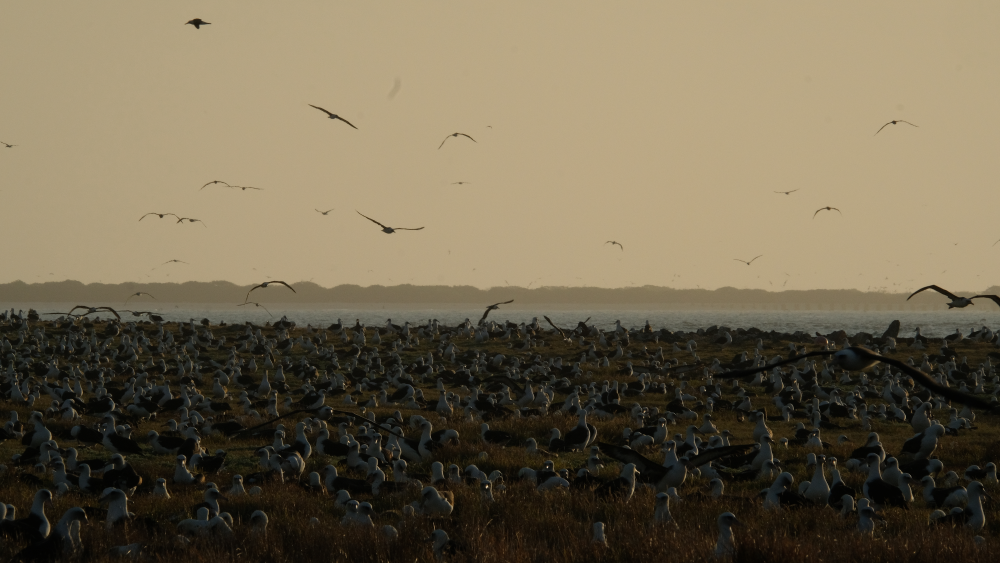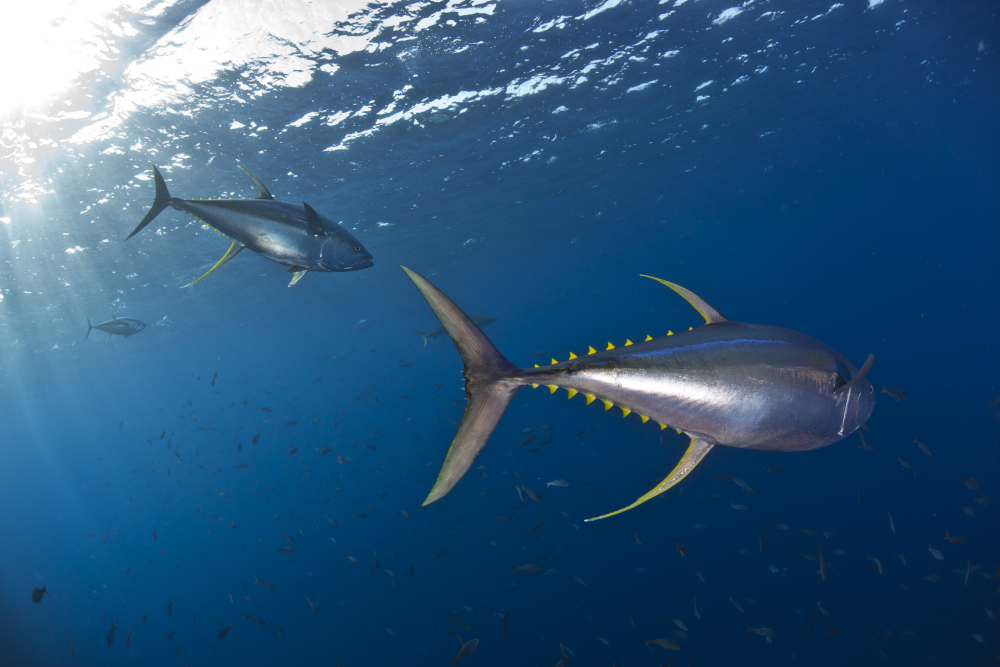An unhealthy ocean means an unhealthy planet, and without it, we simply wouldn’t exist. That’s just a fact, but in the same breath, a healthy ocean can lead to a more resilient planet, and a better future for every living thing on Earth. The best news of all? Given the chance, the ocean can recover at a rate, and to a degree, beyond anything we ever imagined possible. How do we know that? Because of Papahānaumokuākea.
Pronounced Pa-pa-hah-now-mo-koo-ah-keh-ah, it is one of the largest marine conservation areas in the world and our first opportunity this century to witness what happens when we protect large parts of the ocean. We’ve seen across the planet how guarding even small sections of the ocean from damaging practices like bottom trawling can allow ecosystems to bounce back, but for migratory species like whale sharks, cetaceans, and tuna, this just isn’t enough.
It had been argued that large-scale marine protected areas for migratory species simply wouldn’t work, but Papahānaumokuākea has shattered this assumption. The marine conservation area gave yellowfin tuna a safe place to reproduce, and as they spread, we saw a boost in yellowfin tuna in surrounding areas of 54 percent.
This is what’s known as spillover, and it underpins a crucial message of David Attenborough’s latest release, Ocean, which is that protecting marine habitats doesn’t mean being anti-fishing. It means working towards a shared goal or creating a healthier ocean, and in short? More fish.
“These protected areas dispel the myth that we cannot protect more of the ocean because that would harm the fishing industry,” marine ecologist Enric Sala, Executive Producer and Scientific Advisor on Ocean, and National Geographic Explorer, told IFLScience. “The worst enemy of fishing is overfishing, not protected areas. Protected areas are key to the future, and the industry. These areas are key to replenish the rest of the ocean and ensure that we have fish to catch and eat into the future.”
When we carve out areas on land and dedicate them to conservation, the effects are typically more contained (we saw this with efforts to save one of the world’s rarest and weirdest snails). In contrast, when you protect areas of the ocean, the benefits leak out to the rest of the surrounding waters.
This theme of hope and recovery, it’s not just a dream. It’s not just a possibility. It’s actually happening.
Toby Nowlan
For Papahānaumokuākea, a key marker of the health of the environment was a sacred bird: the mōlī, also known as Laysan albatross (Phoebastria immutabilis). There’s a lot to love about these birds. They mate for life, which is a big decision for the longest-living known birds on the planet. It can take years to find their perfect match and involves lots of dancing, and once they’ve found a mate, there’s more dancing still.
Described as seers, their home is the whole Pacific Ocean, but they depend on spits of land for breeding. Elders and Hawaiian fishers led the charge for better protections for these nesting grounds, and it saw mōlī go from near-extinction to the largest albatross colony in the world, a place that 14 million seabirds return to each year.

The return of 14 million Laysan albatross annually forms the largest albatross colony found anywhere in the world.
Image credit: Silverback Films and Open PlanetStudios/Toby Nowlan
“This is what happens when you protect huge slices of ocean,” said Toby Nowlan, who was director and producer on Ocean, to IFLScience. “This theme of hope and recovery, it’s not just a dream. It’s not just a possibility. It’s actually happening. It’s happening everywhere, in fact. All around the world. It’s more than achievable, and we’re starting it. We’re starting that journey.”
“Life explodes back to life in the most spectacular way, filling up huge areas of ocean and having effects that we didn’t even realize, like protecting these pelagic, highly mobile species such as yellowfin tuna, which the anti-protection lobby always argued could not be protected by no-take zones.”
Who knows what other miracles are still to come from ocean protection.
Toby Nowlan
“That’s clearly not the case. Fifty-four percent of yellowfin tuna now spill over into these unprotected waters, reviving fisheries. So, who knows what other miracles are still to come from ocean protection.”
Bottom trawling was invented around 700 years ago in the UK, and has been tearing up the ocean floor ever since. That includes, by the way, within the 3 percent of the ocean that’s currently classified as a marine protected area, but that could all be about to change.
“After a lifetime of filming our natural world, I cannot remember a more exciting opportunity for our species,” says Sir David Attenborough in Ocean. “This could be the moment of change. Nearly every country on Earth has just agreed on paper to achieve this bare minimum and fully protect a third of the ocean. Together, we now face the challenge of making it happen.”

“The anti-protection lobby always argued [tuna] could not be protected by no-take zones. That’s clearly not the case. 54% of yellowfin tuna now spill over into these unprotected waters, reviving fisheries.”
Image credit: Erick Higuera
This protection will focus on biodiversity hotspots like seamounts and coastlines, with a goal not of robbing people of their right to fish, but of creating an abundance in the ocean that nobody alive today has ever seen. That abundance is within our reach, and as for what that might that look like?
“You jump in the water, and immediately you are surrounded by life,” said Sala. “You’re jumping off a coral reef, and you’re surrounded by sharks, big groupers, or jacks. Coral covers most of the bottom.”
Best of all, it wouldn’t even take that long. When asked how long we might imagine to be waiting to enjoy the benefits, Sala said, “Very fast. We don’t need to imagine, we have seen it.”
We’ve seen places go from degraded to completely pristine in 10 years
Enric Sala
“We have seen changes, increases in marine life inside protected areas in as little as three years. We’ve seen places go from degraded to completely pristine in 10 years, and so, within a few years, you can already see the recovery of marine life and the replenishment of the surrounding areas. Within just a few years, we could already be in a better situation than right now.”
Without proper protection, it’s predicted that nearly all coral reefs could disappear in the next 30 years, but we have already seen in some places that entire reefs can come back to life when the crucial organisms that make up the ecosystem are present. Protection from overfishing allows them to become more resilient, supporting our climate, our food supply, and our future.
Ocean with David Attenborough airs Sunday, June 8, at 8 pm on National Geographic and streams the same day on Disney+, and is available in select cinemas now. With the 2025 UN Ocean Conference just days away, there’s never been a better time to join the conversation.
Source Link: “Papahānaumokuākea Is The Poster Child For The Future”: The Incredible Recovery Of One Of The World's Largest Marine Conservation Areas